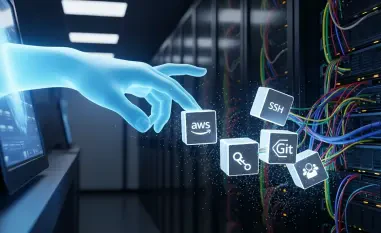Unveiling a Critical Flaw in Enterprise Technology
Imagine a scenario where a single breach in a core business system could bring an entire global enterprise to its knees, exposing sensitive data and disrupting critical operations. This is not a distant possibility but a pressing reality for organizations using SAP S/4HANA, a leading Enterprise Resource Planning (ERP) software integral to managing finance, logistics, and operations for countless businesses worldwide. As a cornerstone of enterprise technology, this platform’s significance cannot be overstated, yet a recently discovered vulnerability has cast a shadow over its reliability, raising urgent concerns about cybersecurity in mission-critical environments.
The focus of this review is a severe security flaw identified as CVE-2025-42957, which has sent ripples through the industry due to its potential for catastrophic impact. With a CVSS score of 9.9, this vulnerability underscores the fragility of even the most robust systems when targeted by sophisticated threats. The following analysis delves into the specifics of this flaw, its implications for affected systems, and the measures needed to safeguard against exploitation.
Dissecting the Command Injection Threat
Nature and Severity of the Flaw
At the heart of this issue lies a command injection vulnerability within a function module exposed via Remote Function Call (RFC) in SAP S/4HANA. This flaw allows attackers with minimal user privileges to inject malicious ABAP code, effectively bypassing essential authorization checks. The result is a potential full system compromise, where threat actors can manipulate databases, create superuser accounts, steal sensitive information, and disrupt business continuity.
The gravity of this vulnerability cannot be overstated, as it opens the door to a range of devastating outcomes. From unauthorized data modifications to the extraction of password hashes, the consequences threaten the very foundation of organizational security. This flaw’s high CVSS score reflects its critical nature, demanding immediate attention from system administrators and security teams across industries.
Affected Systems and Exposure Level
This vulnerability primarily impacts on-premise and Private Cloud editions of SAP S/4HANA, leaving a vast number of organizations at risk. What makes this flaw particularly alarming is the low barrier to entry for attackers, who need only basic user access to exploit it. Such accessibility amplifies the threat, as even low-level accounts can serve as gateways to complete system control.
The scope of exposure extends across various sectors that rely on this ERP solution for their core operations. Without swift remediation, companies face the looming danger of undetected intrusions that could fester within their systems. This widespread applicability of the vulnerability highlights the urgent need for comprehensive risk assessments and mitigation strategies.
Exploitation Trends and Real-World Impact
Current Exploitation Status
Reports from SecurityBridge Threat Research Labs have confirmed that CVE-2025-42957 is already under active exploitation in the wild, targeting vulnerable SAP S/4HANA instances. Cybersecurity firm Pathlock has also noted unusual activity consistent with exploitation attempts, signaling that threat actors are capitalizing on this flaw. Although widespread attacks have not yet surfaced, the risk remains high due to the ease of reverse-engineering the patch released by SAP earlier this year.
The active exploitation underscores the speed at which vulnerabilities can be weaponized once identified. Security teams must remain vigilant, as the window between discovery and attack continues to shrink in today’s threat landscape. This situation serves as a stark reminder of the importance of timely updates and proactive monitoring to stay ahead of malicious actors.
Consequences for Businesses
Beyond the technical implications, the real-world impact of this vulnerability poses severe risks to organizations, ranging from financial fraud to industrial espionage. A successful exploit could enable data theft, ransomware deployment, or sabotage of critical business processes, leading to operational downtime and reputational damage. Industries such as manufacturing, retail, and finance, which heavily depend on SAP S/4HANA, face particularly high stakes.
Consider the cascading effects of a compromised system: disrupted supply chains, falsified financial records, or leaked proprietary information could cripple an organization’s ability to function. The potential for such widespread disruption emphasizes the need for robust defenses and contingency plans. Protecting these systems is not just a technical necessity but a business imperative to safeguard trust and stability.
Challenges and Protective Strategies
Obstacles in Mitigation
Addressing this vulnerability presents significant challenges for organizations, particularly due to operational dependencies that delay patching efforts. Many enterprises hesitate to apply updates immediately, fearing downtime or compatibility issues with custom configurations. Additionally, a lack of awareness about the flaw’s severity can further hinder timely action, leaving systems exposed for extended periods.
Another hurdle lies in detecting exploitation attempts, as many organizations lack the specialized monitoring tools required to identify suspicious activity. Without visibility into RFC calls or unauthorized account creations, breaches may go unnoticed until significant damage occurs. Balancing the need for system updates with minimal disruption remains a persistent dilemma in enterprise environments.
Recommended Safeguards
To counter this threat, organizations must prioritize applying the security patches released by SAP in August of this year without delay. Monitoring system logs for anomalies, such as unexpected RFC activity or new admin accounts, is equally critical to identifying potential intrusions. Implementing network segmentation can limit the spread of an attack, while regular backups ensure data recovery in the event of a breach.
Further protective measures include restricting RFC usage through SAP UCON and tightening access controls to specific authorization objects like S_DMIS activity 02. By adopting a multi-layered security approach, companies can significantly reduce their exposure to this vulnerability. Staying proactive with these strategies is essential to maintaining system integrity amid evolving threats.
Looking Ahead to Enhanced Security
Evolving Threat Landscape
The sophistication of cyber threats targeting enterprise systems like SAP S/4HANA continues to grow, with attackers constantly seeking new ways to exploit vulnerabilities. This incident serves as a wake-up call for the industry to anticipate and prepare for increasingly complex attack vectors. As digital transformation accelerates, the attack surface for ERP solutions will likely expand, necessitating stronger defenses.
Speculation on future advancements in SAP security protocols points toward greater integration of automated threat detection and response mechanisms. Collaboration between vendors and users will be vital to address emerging risks and develop resilient frameworks. The focus must shift toward preemptive measures to outpace adversaries in this ever-evolving domain.
Long-Term Implications
Looking beyond immediate remediation, this vulnerability highlights the broader need for continuous vigilance in enterprise software security. Organizations must adopt a mindset of ongoing improvement, regularly updating policies and technologies to match current threats. Building a culture of cybersecurity awareness across all levels of an organization will be key to long-term protection.
The trajectory of enterprise systems security suggests a future where proactive strategies and rapid response capabilities become standard. Investing in training, tools, and partnerships with security experts can help businesses stay resilient. This forward-thinking approach will be crucial to safeguarding critical systems against tomorrow’s challenges.
Reflecting on a Critical Wake-Up Call
Reflecting on the analysis of CVE-2025-42957, it becomes evident that this vulnerability poses an unprecedented threat to SAP S/4HANA users, shaking confidence in the security of enterprise systems. The severity of the flaw, coupled with active exploitation, demands an urgent response that many organizations struggle to deliver promptly. This incident exposes critical gaps in preparedness and response that need addressing.
Moving forward, the path to resilience lies in adopting a comprehensive security posture that includes immediate patching, enhanced monitoring, and restricted access controls. Enterprises should consider investing in advanced threat detection tools to stay ahead of potential breaches. Partnering with cybersecurity specialists offers an additional layer of defense to navigate future risks.
Ultimately, the lesson learned is that complacency in the face of evolving threats can no longer be an option. Organizations need to commit to regular audits and updates, ensuring their systems remain fortified against similar vulnerabilities. This proactive stance promises to rebuild trust and secure the foundation of business operations for the long haul.













